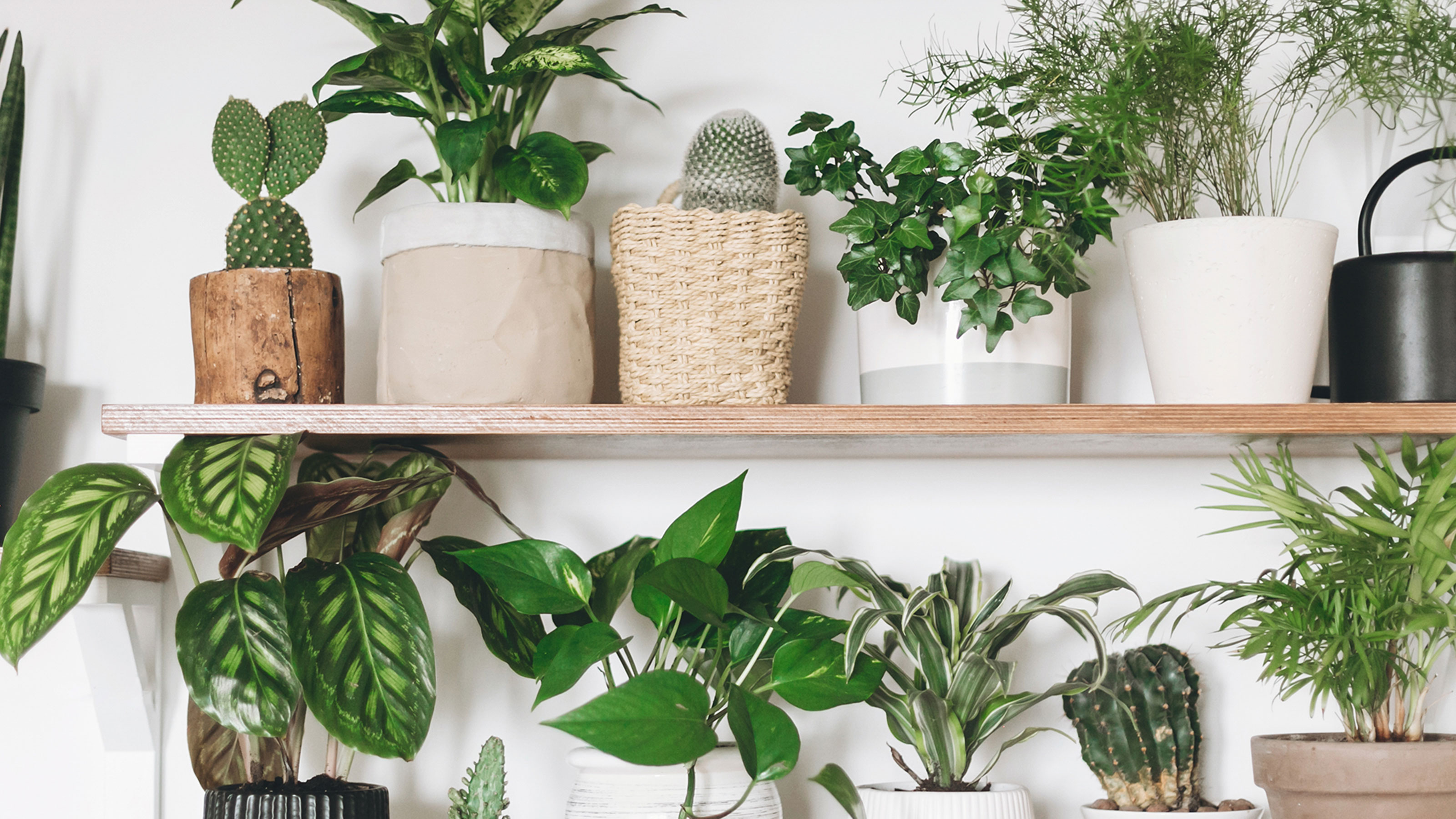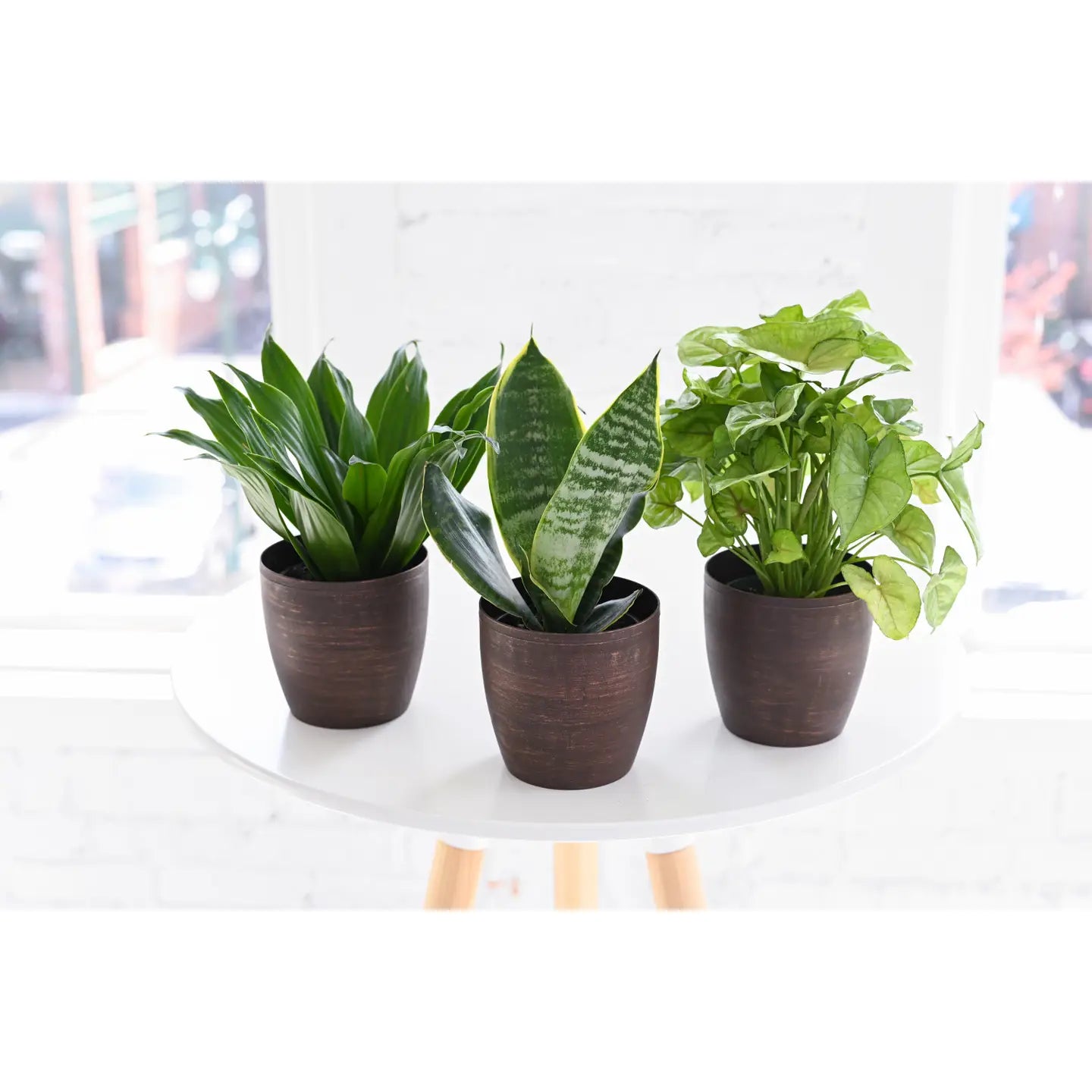The Best Low-Light Indoor Plants for Beginners and Busy Plant Owners
The Best Low-Light Indoor Plants for Beginners and Busy Plant Owners
Blog Article
Check Out the Unique Benefits of Low-Light Indoor Plants for Your Living Space
Including low-light interior plants into your space offers a plethora of benefits that extend far past simple aesthetics. These sturdy plants not only prosper in environments with limited sunlight however additionally serve vital features such as air purification and humidity improvement. They can favorably influence your state of mind and general health while requiring very little upkeep. As you take into consideration the transformative capacity of these plants, it becomes necessary to explore exactly how their unique qualities can customize your setting to far better serve your lifestyle. What certain advantages might reverberate most with your individual space?
Air Purification Advantages
Low-light interior plants not only enhance the visual allure of living areas however likewise play a considerable function in air purification. Research has actually shown that specific plant types can efficiently remove usual interior pollutants, consisting of benzene, formaldehyde, and trichloroethylene. These compounds often rise from household products such as furnishings, cleaning items, and structure materials, contributing to indoor air top quality issues.
Plants such as the serpent plant, pothos, and peace lily are especially adept at filtering system harmful compounds from the air while flourishing in low-light problems. The process of phytoremediation, wherein plants take in and metabolize contaminants, allows these varieties to add dramatically to a much healthier indoor setting. Furthermore, through photosynthesis, plants release oxygen, further enhancing air top quality.
Including low-light interior plants right into office or home areas not only supplies aesthetic advantages yet also functions as a useful strategy for boosting air high quality. By choosing the appropriate types, individuals can develop a setting that advertises well-being and reduces exposure to hazardous pollutants, making these plants a crucial aspect in modern-day interior living.

Mood Enhancement Impacts
Many researches have shown that including indoor plants can substantially enhance mood and total psychological well-being. The existence of greenery in indoor environments has been connected to minimized stress and anxiety degrees, boosted sensations of calmness, and improved emotional health. Low-light interior plants, particularly, thrive in environments where natural light is restricted, making them perfect for different living areas.
Research study shows that interacting with plants can stimulate the release of serotonin, a neurotransmitter related to sensations of happiness and health. Furthermore, the act of caring for plants promotes a feeling of obligation and accomplishment, more adding to favorable mental wellness results. Moreover, low-light plants such as snake plants, pothos, and tranquility lilies have actually been shown to boost air high quality, which is intrinsically linked to state of mind improvement.
Incorporating these plants right into your office or home can create a peaceful environment, providing a sensory and aesthetic escape from the pressure of daily life - Best low-light indoor plants. As people invest raising quantities of time inside, the mood-enhancing effects of low-light indoor plants become a lot more vital, supplying not only visual appeal but likewise an extensive effect on psychological health
Reduced Maintenance Demands
For those looking for to boost their interior rooms without a substantial time dedication, low-light interior plants are an excellent choice as a result of their low upkeep demands. These durable plants prosper in less-than-ideal illumination problems, making them ideal for homes and offices where natural sunlight is restricted.

Pest resistance is another advantage of low-light interior plants. Several varieties are less at risk to usual pests, decreasing the demand for constant surveillance and treatment. Moreover, these plants normally expand more slowly than their high-light counterparts, suggesting much less regular repotting and pruning are necessary.
Visual Appeal and Versatility

Furthermore, these plants can be set up in myriad methods, whether in groups for a lush result or as standalone attributes to draw the eye. The options of view it now planter styles-- from streamlined ceramic pots to rustic wood containers-- even more improve their visual value, permitting house owners to share their personal style.
Furthermore, low-light plants can be strategically put in areas that may otherwise really feel disregarded, such as edges or poorly lit racks, thereby maximizing their decorative potential. Ultimately, the mix of their striking appearance and adaptability makes low-light interior plants a valuable addition to any type of living area, creating a welcoming environment that promotes wellness and leisure.
Improved Humidity Degrees
Enhancing indoor moisture levels is just one of the significant benefits of integrating low-light indoor plants into living rooms. These plants naturally release moisture vapor via a procedure known as transpiration, which happens when water soaked up by the roots relocates with the plant and vaporizes from the leaves. This why not check here procedure not just boosts humidity yet also contributes to a much healthier interior setting.
Better humidity degrees can ease numerous health problems, such as completely dry skin, breathing problems, and allergic reactions. Lots of individuals experience pain in dry indoor conditions, specifically during winter season when heater are in use. By purposefully positioning low-light plants throughout your home, you can develop a much more balanced humidity level that cultivates total wellness.
Moreover, specific low-light indoor plants, like tranquility lilies and spider plants, are specifically efficient at boosting moisture. Their capability to thrive in low-light atmospheres makes them suitable for different spaces, from workplaces to rooms. Along with enhancing moisture, these plants can likewise improve air high quality by removing usual interior toxins, making them a beneficial enhancement to any living area. Hence, low-light interior plants offer both aesthetic and functional objectives, advertising a much healthier environment.
Verdict
In summary, low-light interior plants use countless benefits that add to a healthier and a lot more welcoming living area. Their Go Here capability to cleanse the air, boost mood, and improve humidity levels highlights their worth as reliable style elements. Furthermore, their reduced upkeep requirements and visual flexibility make them ideal for various settings. Integrating these durable plants right into interior settings not just raises the setting yet additionally promotes total wellness, establishing a serene haven for locals.
Plants such as the snake plant, pothos, and tranquility lily are especially experienced at filtering system hazardous substances from the air while thriving in low-light problems. Low-light plants such as serpent plants, pothos, and tranquility lilies have been shown to improve air quality, which is intrinsically connected to state of mind improvement.
Low-light interior plants, such as snake plants, pothos, and ZZ plants, not only improve the visual landscape of a room but also present numerous appearances and shades of eco-friendly that can match varied indoor styles. These plants naturally release dampness vapor via a process recognized as transpiration, which happens when water absorbed by the origins moves with the plant and evaporates from the leaves.Moreover, certain low-light interior plants, like tranquility lilies and crawler plants, are particularly reliable at enhancing moisture.
Report this page